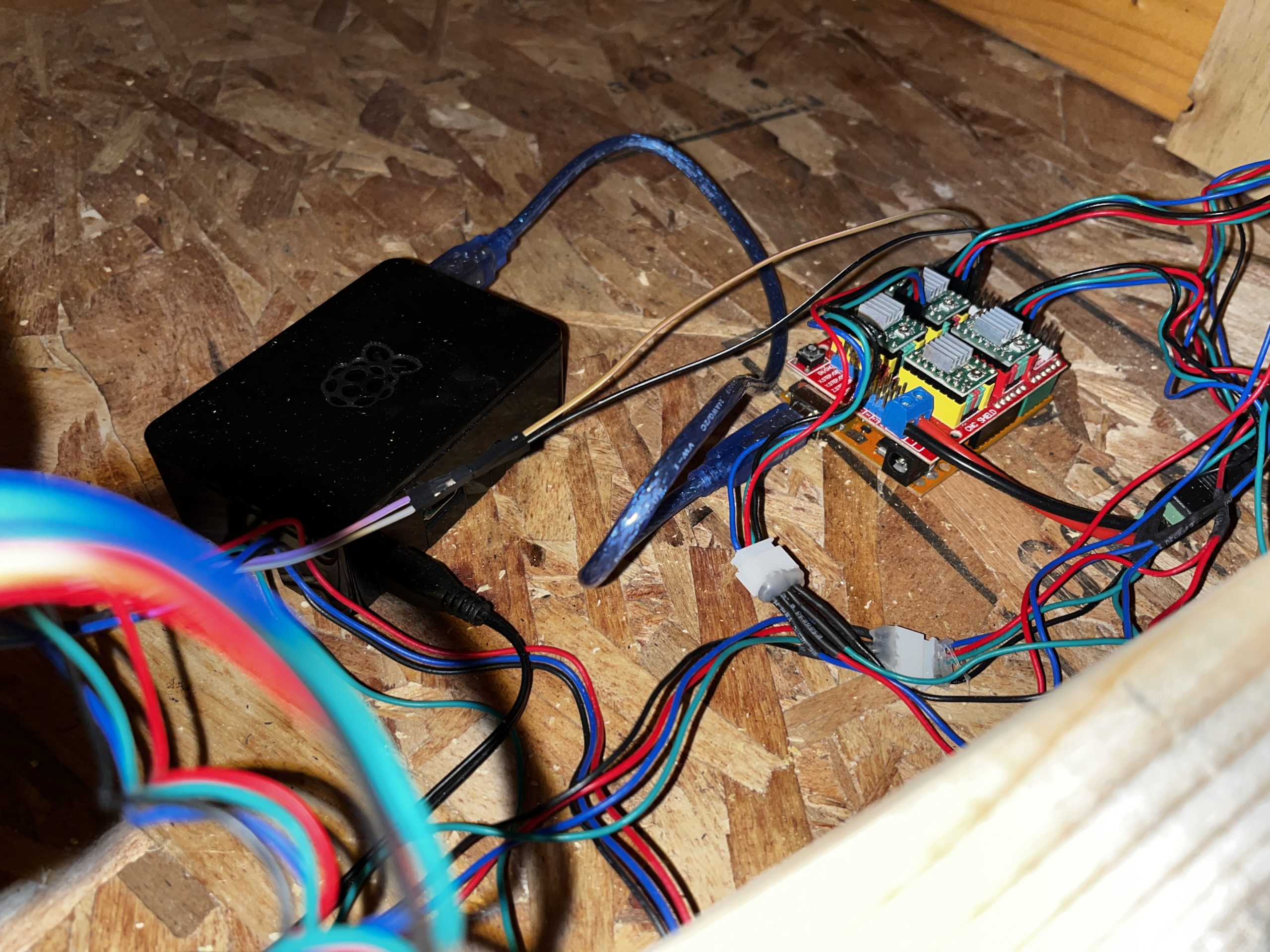Posts in Category: Technology
AWS SAM CLI “ClassNotFoundException”
Laser Engraver
So I originally started with some old printer parts and had a small working laser engraver. I am using some drawer rails as the X axis and now I’ve got some 3/8 rods for the Y axis. I happen to have the v-slotted bearings that a friend gave me a while ago which work great as the carriage.
I ended up purchasing 4 of the precision threaded rods as the regular threaded rods you buy at the hardware store have a bit of a dead zone to them (found that out the hard way). I originally had my X axis using a single belt…then went to two motors with 2 belts…and finally swapped them over to using the precision rods. Now it is pretty solid, especially for using drawer rails to hold it together. =)
It’s all run by a raspberry pi running OctoPi and then an arduino uno with the cnc hat.
I originally had my Y axis using two 3/8 rods with a 3d printed carriage that slid onto the rods…but this proved too stiff and the laser would show a slight warping when the Y axis would change directions. I then swapped it to the v-slotted bearings and a wooded rig as the carriage. This slid much easier and required no real torque from the motor at all to move around.
My next step with this is to rig the carriage to hold my dremel and act as a sort of mini-cnc…and ultimately handle doing circuit boards!







NodeJS Garden Bench
The need

My wife wanted to start her own seeds this year but here in Maine, you have to do that inside and also make sure you keep the right temperature during the day and night. #RaspberryPiToTheRescue !!
Took a bunch of scrap pieces of wood that I had to make the bench itself so it doesn’t look pretty but it works. We just covered it with some painter’s drop-cloths to hold the heat.
Debugging a Lambda with VSCode
Writing code for the cloud is great! So many positives that it just makes sense. The biggest downside with some is debugging your code….it gets tricky making a change, deploy, test then dig through your logs. Of course this can be automated but still get tiresome. With AWS enhancing their SAM (Serverless Application Model), it is now possible to actually run your lambdas locally within a docker container and have your IDE’s debugger attach. There are plenty of tools/plugins to utilize this (Eclipse, IntelliJ, Visual Studio…full list here) but I’m a big fan of Visual Studio Code. So let’s take a deeper dive in how to debug our java lambda line by line with VSCode!